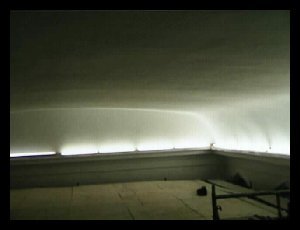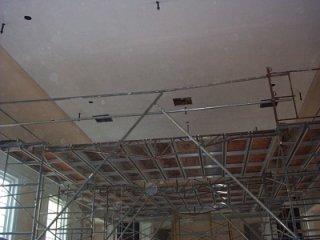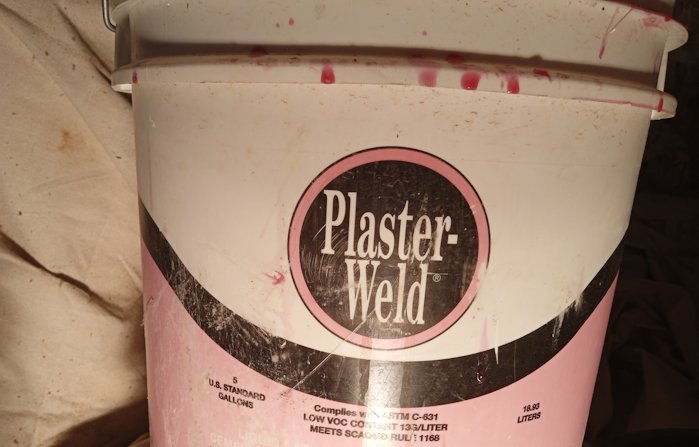Chemical bonding agents
Bonding agents for plaster and cement stucco.



How would you like blood on your hands if a piece of one of these sanctuary ceilings fell off and killed somebody ? We plastered over the old painted plaster after painting on Euco Weld.
I hope I didn't bore you to tears with my column about suction bond. It is important to understand what holds plaster together, as well as determine why it falls off.
I used to think paint bonding agents were Voodoo. I had no idea how a thin paint on film would hold up a heavy ceiling. I just knew that it did. I have seen a lot of failure using these paint on bonding agents, so care must be used.
I have seen a lot of amazing results also. We have plastered Church sanctuary ceilings over old painted plaster, over thirty feet in the air. Just imagine the blood on my hands if the organ hit a certain note and a piece of my ceiling fell and killed someone. I trust them with my life.
How paint on bonders work isn't really voodoo. The surface of the bonder dissolves when wet plaster is applied. When the plaster hardens, it is mixed with the bonder and is locked in place when the bonder dries.
There are some brands I have used and trust: Euco weld, Plaster weld, and USG plaster bonder. There are some brands I have had fail, but I can't bad mouth them here. If you stick to one of the three brands above, you won't go wrong. It is important to never use these bonders if they have frozen. Also, they should never be thinned down with water, or they will fail. Care must be used notto apply them with a wet brush or roller. They should dry until the surface is sticky, at least, before applying plaster. It is usually best to let them set up overnight. It is OK to allow them to dry for days or even weeks, before applying plaster.
You may have seen my warnings about using paint on bonders outside, for exterior stucco. These materials will fail outside, particularly over painted surfaces. They may perform fine over concrete (low suction), and old unpainted stucco (high suction), but the use of paint on bonders should be limited to those people with a proven record.
Acrylic admixtures for cement have improved the quality of our stucco product dramatically over the years, and have breathed a lot of new life into our industry. Acrylics work by mixing with the mortar and making a strong adhesive. In addition to adhesion, they do a lot for the mortar, such as doubling the compressive strength. Acrylics also reduce cracking by adding flexural strength. Other benefits include reducing shrinkage to nothing, eliminating shrinkage cracks, and color retention for color work.
Without acrylics we wouldn't have thin set tile mortar, and bridge repair would be nearly impossible.
Acrylics make permanent bonding stucco mortar possible on low suction surfaces, like concrete, as well as high suction (very porous) surfaces like old brick and old stucco.
You may have seen what I have written before about Milestone and the work of the late Don Miles in Seattle. I never met Don personally, but I was in close touch with him by e-mail and cell phone (ATT wireless was free between major cities.
Milestone is a mixture of Milestone powder, which is Portland cement and other stuff, and the Milestone liquid, which is a concentrated acrylic admixture. As a result, Milestone is sticky and extremely hard, allowing it to be used for floors, showers, exterior and interior finishes, that wouldn't be possible with other materials.